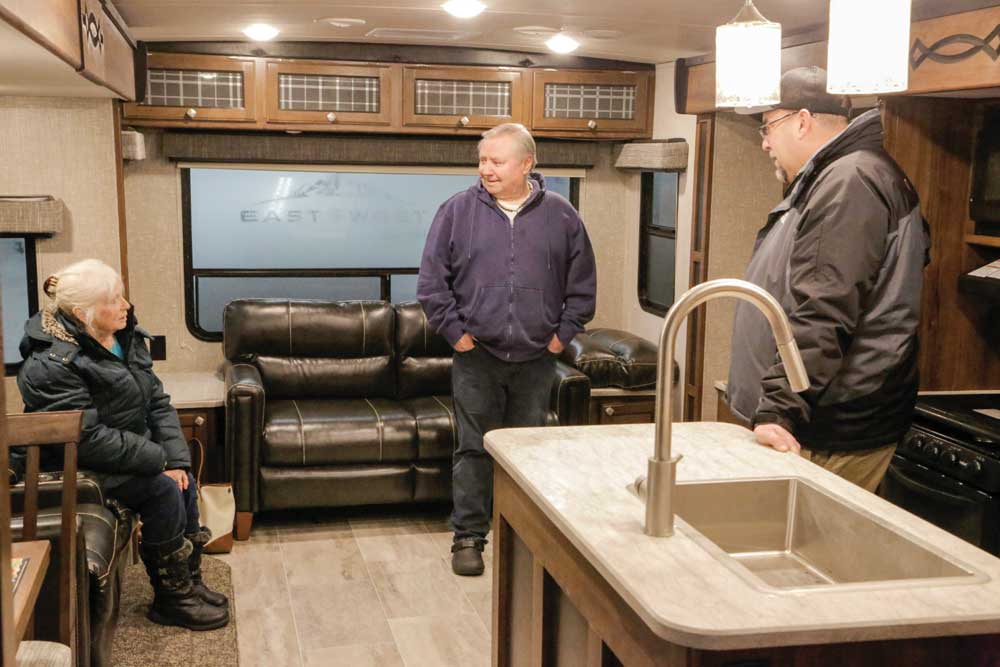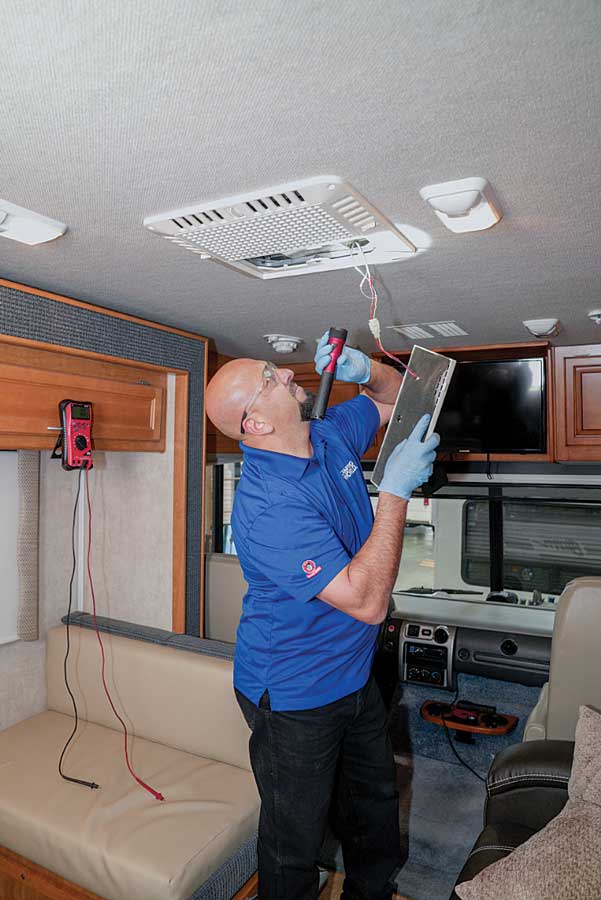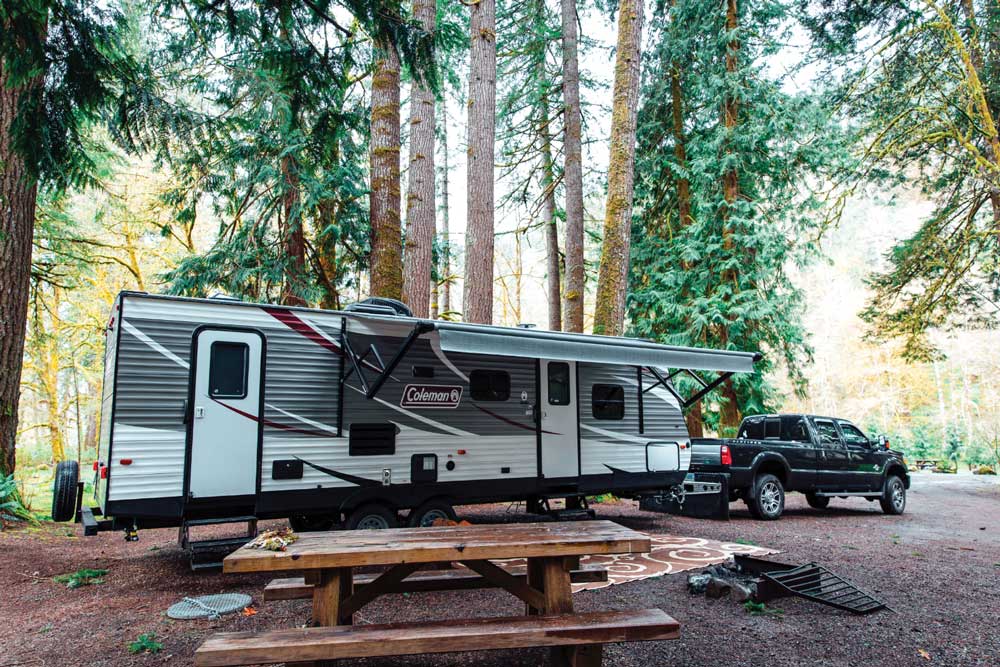So you’ve picked out a dream rig and are ready to sign on the dotted line. Now what?
The process of buying and taking ownership of an RV can be a bit confusing, if not downright daunting, especially for a first-time RV buyer. Many folks expect the process to be similar to purchasing an automobile, and in some ways it is. Shopping, negotiating and financing will be very familiar to anyone who has ever bought a car. But after that, things get a bit more complicated.
Remember, you are purchasing a house on wheels, so the process might take a little longer than you initially expected. Don’t get frustrated. If your dealer takes time to inspect and prep your rig, and you take time to learn how to use it, your RV experience will be that much better in the long run.
Most likely, you will sign a purchase agreement, put down a deposit and then make an appointment to return and actually pick up the RV. If it’s already on the dealer’s lot, your appointment might be a week or two in the future. If you are ordering from the factory, you may have to wait months.
Here’s a list of a dozen do’s and don’ts for taking delivery of your new RV.
Do: Search for a reputable dealer with a robust service department
Sure, you want to get a great price, but you also want to buy from a reputable dealer who will service warranty issues in a timely manner and at a convenient location. RV prices are definitely negotiable, but you do not want to sacrifice customer service for rock-bottom pricing. Read online reviews of the sales and service sides of the dealership. You will most likely need to take advantage of the RV’s warranty, and you’ll want to be confident that the dealer will be there for you at that time.
Don’t: Expect to take delivery on the day you decide to buy the rig
First-time buyers are often surprised that they can’t take ownership on the day they decide to buy an RV, but this is an industry norm. Remember, an RV has a lot more components than the typical automobile, and there is quite a bit of work involved in getting it ready for the road and RV park. The dealer will do a complete predelivery inspection (PDI), checking over all the RV systems, cleaning the interior and exterior, and handling dealer-installed accessories and options.
If you buy at an RV show, it’s important to know that you probably won’t be towing the RV home with you. Instead, you will make an appointment to visit the dealership after the show to actually take delivery.

Shoppers, especially first-time buyers, should look for a dealer who is willing to educate them. They should also look for a dealer with a robust service center with positive online reviews.
Do: Research additional equipment you will need to safely tow the RV
Some first-time RV buyers are surprised to discover how much equipment is needed to tow a travel trailer or fifth-wheel.
When we bought our first pop-up trailer, our family SUV needed a hitch and brake controller installed. We had to get that work done before we could safely tow the trailer home for the first time.
Even if your vehicle is already equipped for towing, you’ll still want to research towing equipment in advance — for instance, sway bars and weight-distributing systems if you’re buying a travel trailer. Some buyers are successful with including this equipment in their RV price negotiations, so it’s definitely worth a try. On the other hand, some dealers will install the cheapest equipment when it’s included in the purchase order, so it’s worthwhile to know the most effective and efficient equipment on the market, rather than relying on package deals.
Do: Compare interest rates if you plan on financing the RV
First-time buyers are often surprised at the differences in auto and RV financing. Typical RV loans will range from 10 to 20 years, and the interest rates will likely be higher than those for a new car purchase. Avoid being captive to whatever loan terms are offered by the dealership. Shop for financing in advance at your local credit union or with an online bank. Then you can use these preapprovals to better negotiate with the RV dealer’s finance department.

An RV is a house on wheels, and the dealer walk-through is a buyer’s first opportunity
to do a thorough inspection. Take your time, ask questions and record everything.
Do: Research extended warranties in advance
Everyone has an opinion about purchasing extended warranties, but the bottom line is that there is no obvious answer to the question of whether or not you should buy one of these service packages. The key to purchasing an extended warranty is to research providers with good track records. Handy people may prefer fixing problems with their rig on their own, though buying a replacement appliance can be pricey, so figure that into the equation when considering a warranty purchase. Other buyers will enjoy the RV only if they have the peace of mind an extended warranty can offer. Either way, you want to do your research ahead of time and have an educated response to the high-pressure sales tactics that sometimes occur during the purchase process.
Do: Set aside time for a thorough RV walk-through
We get it. You want to get that trailer on the road. But now is not the time to rush out of the dealership. When you show up to take delivery of your RV, the dealer will give you a walk-through of your new rig, demonstrating the systems and appliances, from extending down the stabilizer jacks to filling up the freshwater tanks and opening the awning. We’ve purchased three RVs from a wonderful dealer, and every walk-through has taken at least two hours from start to finish.
Do: Record the walk-through on a smartphone or other device
There’s a lot of information to take in on an RV walk-through, and even seasoned RVers get overwhelmed. Don’t rely on your memory to take it all in. We highly recommend using a smartphone or other device to record the RV tech’s lessons on every system. Record each RV component individually so they are easy to reference in the future. For example, we have separate videos on the automatic leveling system and the macerator for dumping the holding tanks, both new pieces of technology that we knew would take us awhile to learn how to operate.
While recording, also ask your service tech to demonstrate how to winterize and dewinterize the RV. Having reference videos for your personal rig is priceless.
Do: Ask the dealer to test all of the RV’S systems
A reputable dealership will allow you to test the systems, including running water and checking that the water heater is actually heating the water, the water pump is actually pumping water and all the electrical outlets are working. The dealer will also take time then and there to fix any small issues that are found. On our most recent walk-through, we needed a pipe fitting tightened. This was an easy fix that could have caused real damage if not discovered and repaired at that time.
We’ve heard from folks that some dealers balk at testing everything during the walk-through. We encourage buyers to be persistent with this request, as it is incredibly frustrating to uncover problems on your first outing that could have been fixed immediately.
Do: Test the air conditioning, refrigerator and other appliances
Make sure that you run the air conditioner and turn all the appliances on and off and then on again during your walk-through. We highly recommend testing the refrigerator on both the electric and LP-gas settings. Ask to do this at the beginning of your walk-through, and then check in at the end to make sure the fridge is cooling down (in most cases, it will not be down to the proper temperature during that time, since that generally takes hours). This is a great time to ask the service tech to show you the fuse box and ask if you can purchase a fuse kit in the dealership’s parts store.
Don’t: Take ownership until the RV is in tip-top operating condition
An RV is a big purchase, and there is a huge learning curve, even for experienced buyers. If you don’t feel like the dealer has given you a complete walk-through or if you have concerns regarding anything operating correctly, do not take ownership of the RV. During our most recent walk-through, the toy-hauler screen door was jamming a bit when opened and closed. We sat patiently in the waiting room while the technicians fixed it before hitching up. To us, no issue is too small to address.
Do: Schedule a shakedown trip as soon as possible
Some of the best dealers have on-site camping for customers to fully test their new rigs and get any bugs out of the system. Of course, we are not all so lucky to purchase from one of those dealers, but a close-to-home trip is always a good idea with a new RV. Find a full-hookup site near your home or RV dealer and put the RV through its paces. It’s better to discover issues on a shakedown weekend than hundreds of miles away on a bucket-list adventure.

It’s tempting to hit the open road the second you get your new RV. The better choice is to schedule a shakedown trip near home where the only focus is testing all the RV systems and learning more about your new rig.
Don’t: Sweat the small stuff
Even if you do everything right, something may go wrong soon after your RV purchase. RVs are homes on wheels, and they pack a ton of technology into a really small space, and then we haul it around the country. Things are going to break. Don’t let a loose cabinet or a faulty Bluetooth stereo keep you from having the time of your life in your brand-new RV. If it’s not a big problem, don’t turn it into one. Keep a running list of small warranty items to address on your next visit to the dealer, and head back out on the open road.
Meet Your Match: Parts 1 and 3
Look for parts 1 and 3 of the “Meet Your Match” series on buying and taking ownership of an RV in the November 2019 and January 2020 issues of Trailer Life. Part 1, “Refining the RV-Shopping Experience,” goes over items to inspect and questions to ask when taking delivery of a new or used RV at the dealership. Part 3, “RV Shakedown Trip,” covers what to expect on the first outing with a new RV and how to avoid the difficulties owners commonly experience.
 Online RV Buyers’ Guide
Online RV Buyers’ Guide
For information on new and used towable RVs, including specs, floorplans and photos, visit Trailer Life’s online RV Buyers’ Guide at rvbg.trailerlife.com. The online search tool has model-year-specific details on RVs going back to 2003. Searches can be done by length, price and manufacturer, as well as model year.
 In addition to contributing to Trailer Life, Jeremy and Stephanie Puglisi are writers for RVFTA.com and hosts of the RV Family Travel Atlas podcast. They are also the authors of Idiot’s Guides: RV Vacations. The couple spends as much time as possible exploring the country in a toy-hauler travel trailer with their three very energetic sons and Maggie the Camping Dog.
In addition to contributing to Trailer Life, Jeremy and Stephanie Puglisi are writers for RVFTA.com and hosts of the RV Family Travel Atlas podcast. They are also the authors of Idiot’s Guides: RV Vacations. The couple spends as much time as possible exploring the country in a toy-hauler travel trailer with their three very energetic sons and Maggie the Camping Dog.


